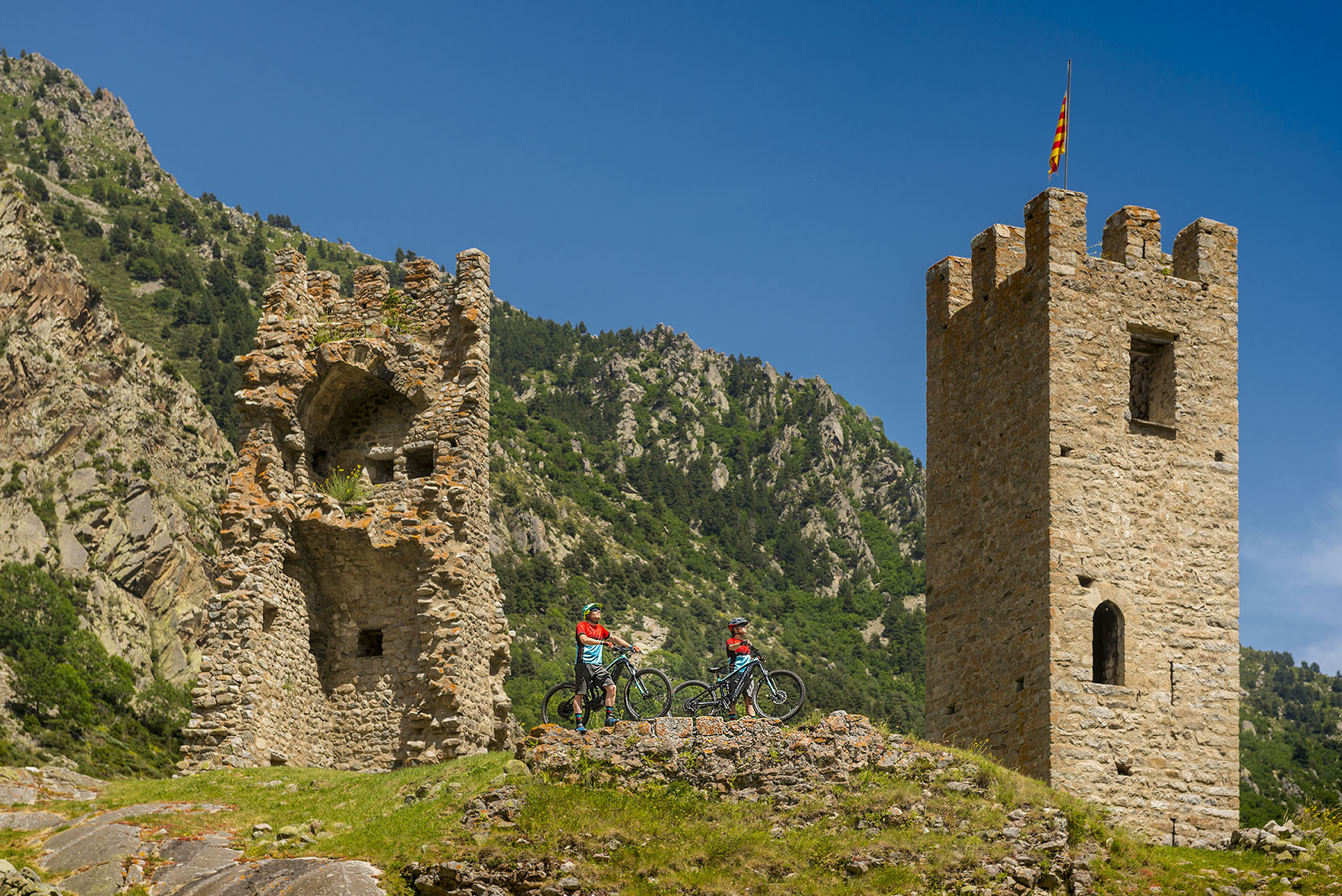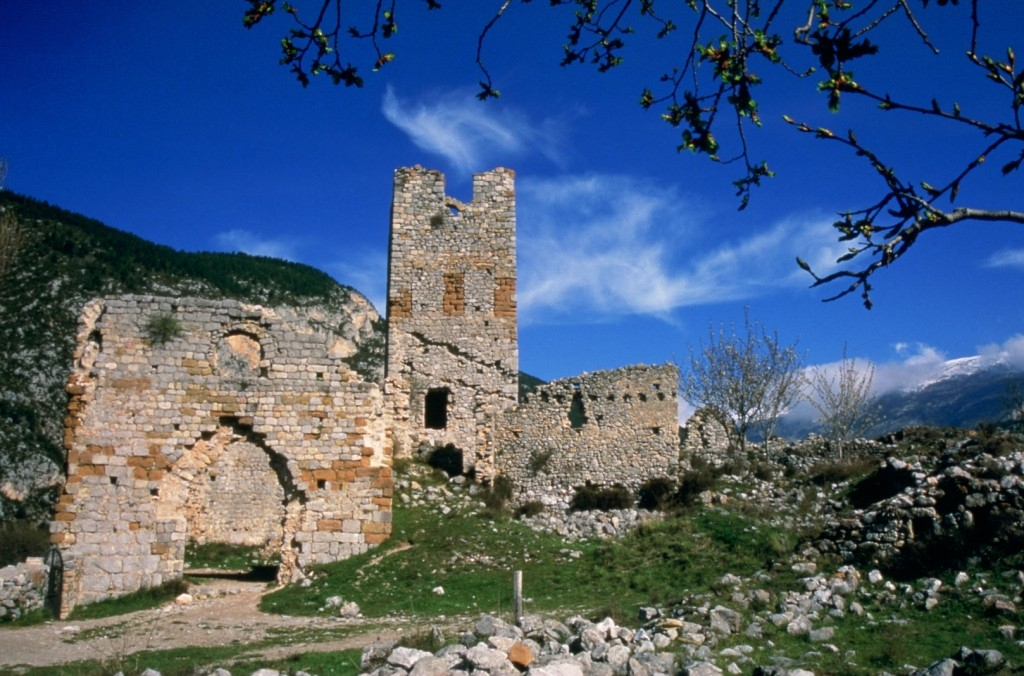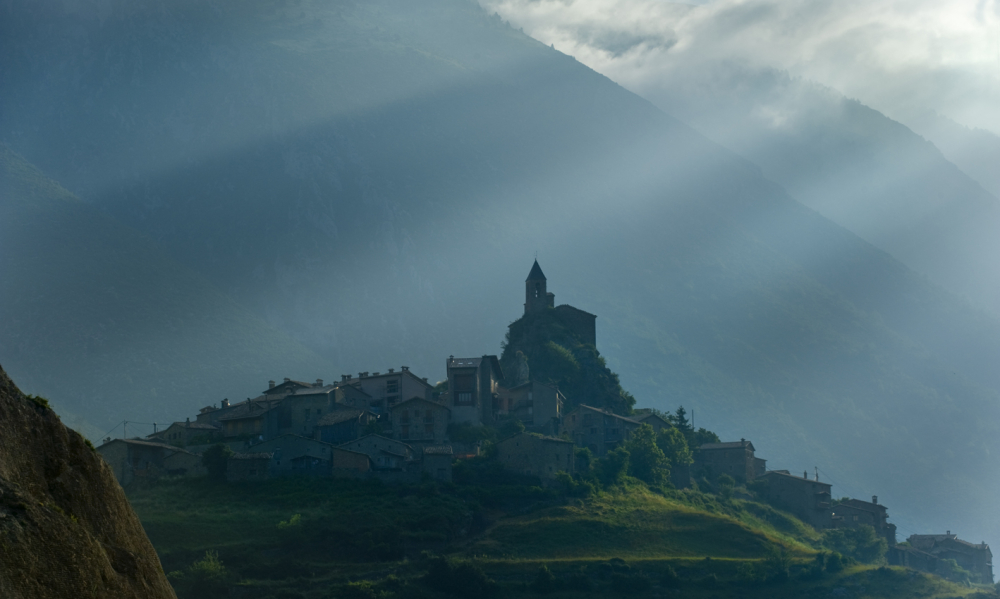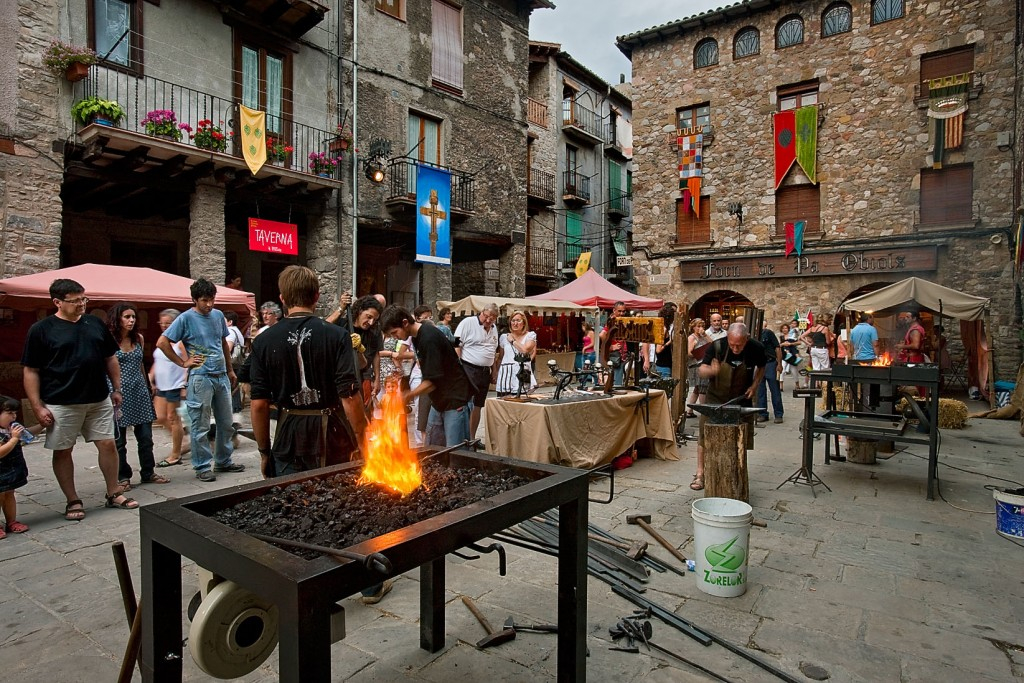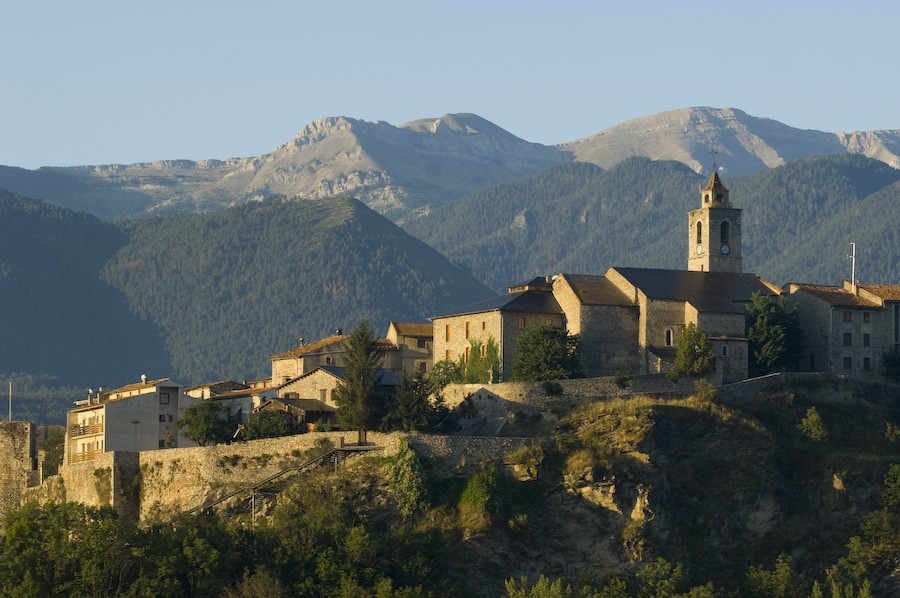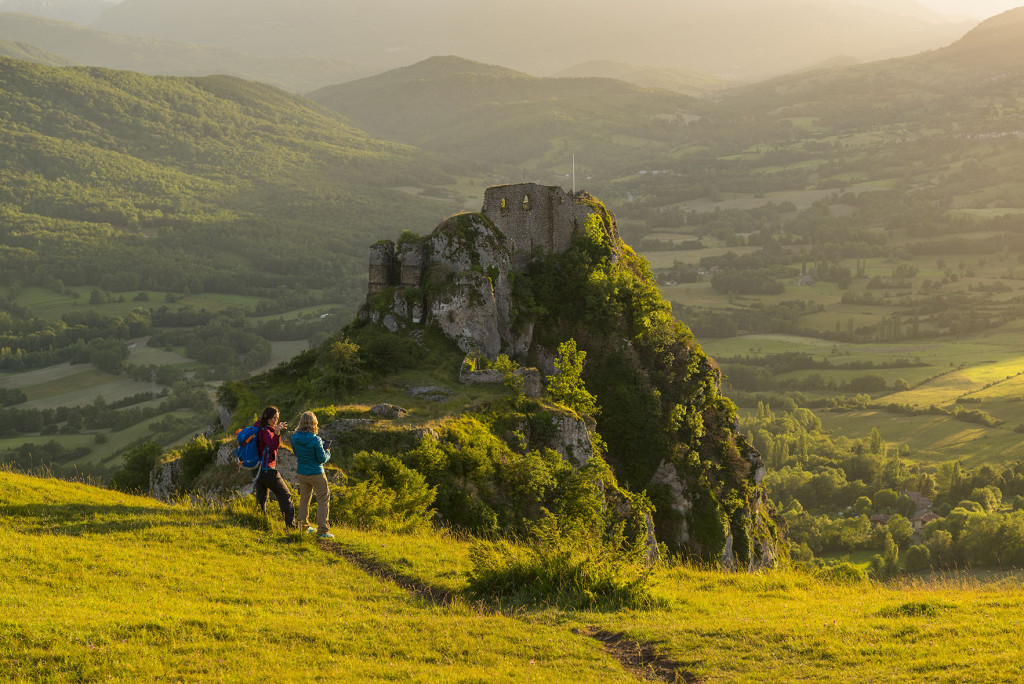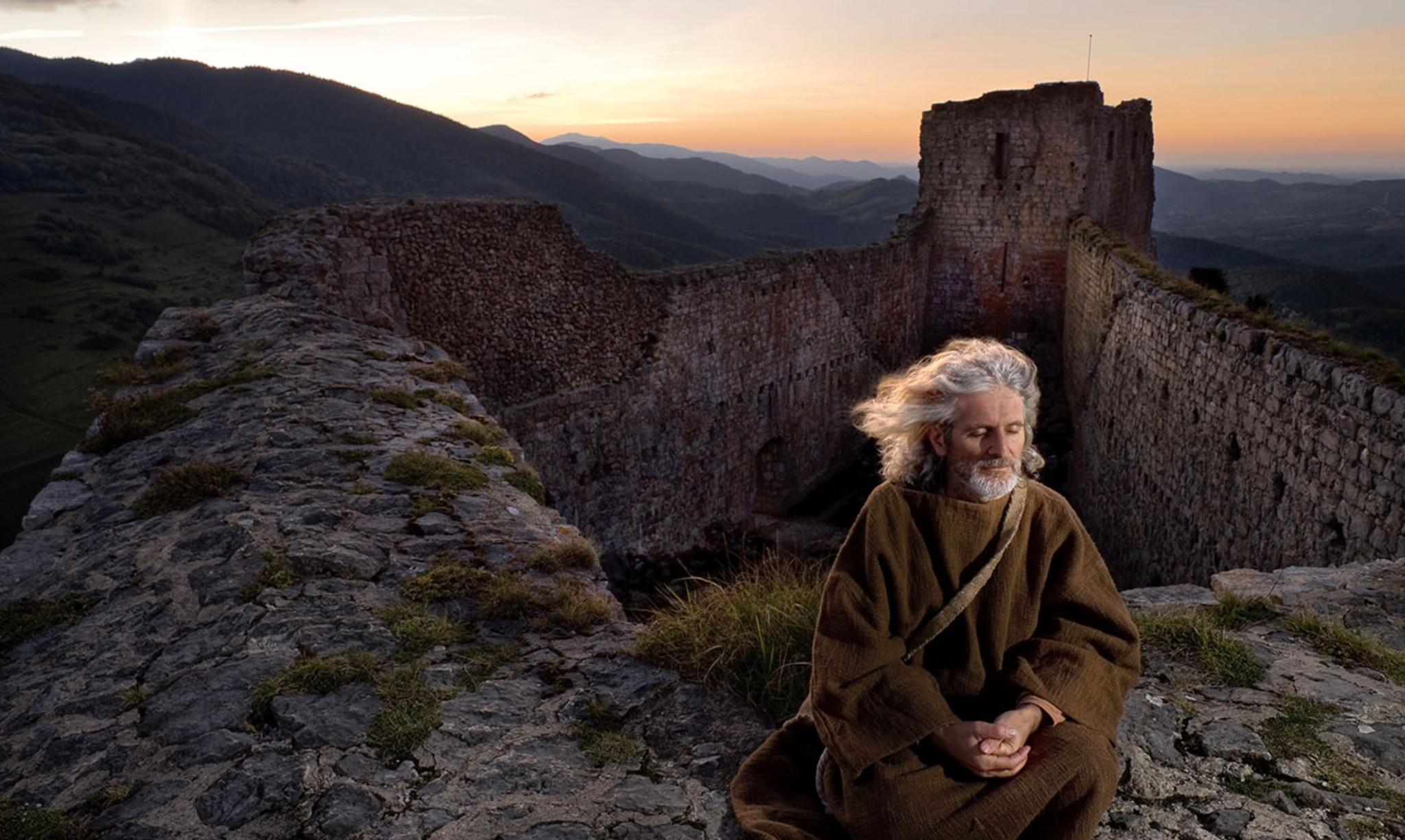The Cathars or Bons Homes and History
Following the footsteps of the Cathars
The Camí dels Bons Homes has been, from the 11th to the 14th century, a very important economic link between Aireja and Berguedà.
This was an itinerary used by the last exiled Cathars who, fleeing prison, dispossession or death, sought refuge in Catalonia. Climbing mountains, crossing passes, sometimes sleeping under a friendly roof and sometimes on the ground, they reached the Catalan lands of Alt Urgell, Cerdanya and Berguedà.
Following this cross-border Pyrenean route, you will walk the same paths and discover the same landscapes through which those men and women persecuted by the Inquisition once passed, and if you take it with calm and reflection, you may come to feel the echo of history.
On foot, on horseback or by mountain bike (in 7-12 days), this exceptional route will take you through unforgettable places.
From the emergence of Catharism to its end
Catharism was a religious dissident movement that spread through various regions of the West during the central centuries of the Middle Ages, with particular prominence in Occitania. The Cathars—or Good Men and Good Women—sought to return to the purity of early Christianity and criticised the opulence and corruption of the ecclesiastical hierarchy of the time. This new doctrine gained many followers in certain regions, which led to an open crisis and a deep theological debate in the Church of Rome.
In Catalonia, the spread of this new movement took place under the auspices of some Pyrenean nobles, such as the Viscount Arnau de Castellbò or Lord Ramon de Josa, who were in conflict with the bishops of Urgell. It was from the Pyrenean castles of these nobles that the Cathars organised a network of contacts that spread the heresy throughout many cities and towns of western Catalonia.
Despite the establishment of the Inquisition in 1232, Catharism was already so deeply rooted in the Pyrenean regions that it would be very difficult to eradicate it. Some inquisitors, such as Ponç de Planés, Bernat de Travesseres and later Pere de Cadireta, were assassinated during the course of their investigations. In 1256, in a campaign of persecution that affected the lands of Berguedà, one hundred and sixty-eight people were condemned for heresy.
From then on, Catharism slowly faded from Catalonia. The last representatives of the Catalan Cathar hierarchy went into exile in northern Italy, and the old families linked to the heresy became extinct or turned away from the old beliefs. Around the beginning of the 14th century, the Catalan regions experienced a final resurgence of Catharism, but ultimately the last known Perfect, Guillem Belibaste, was captured in the town of Tírvia in 1321 and condemned to the stake by the Inquisition.
Carlos Gascon Chopo
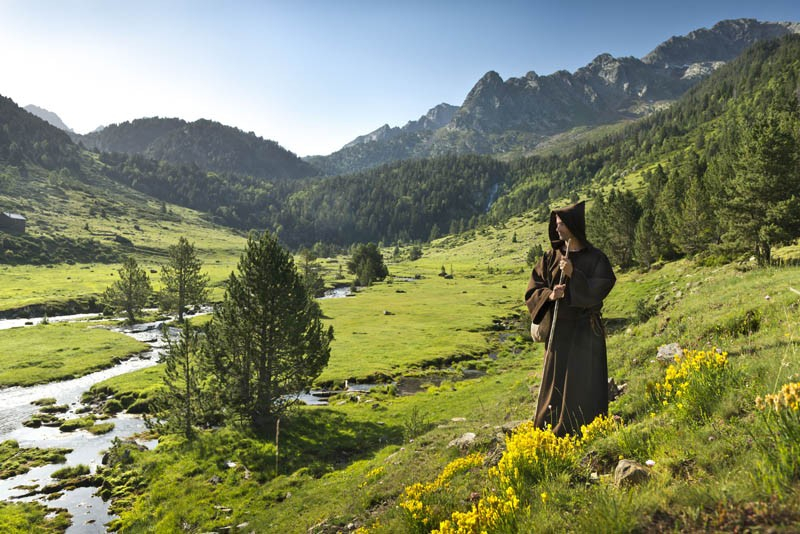
Commercial exchanges on the Camí dels Bons Homes
Although the passage from Toulouse to Catalonia is older and more established through the Perthus Pass than through the Puymorens Pass, it cannot be denied that the latter was one of the most important routes in the economic life of the two major southern regions.
Throughout the medieval period numerous raw materials and processed products circulated along the route “Foix-Ax-Puigcerdà-Berga”. For example, this is the case with the salt from Cardona, the iron mining of Rancié, nails and tools, wheat from Lleida, Catalan wine, textiles from Toulouse and wool from Berguedà.
In the same way, livestock transhumance, a traditional means of connection and exchange between mountain populations, was also significant. And we cannot forget, either, the diffuse small-scale mountain trade.
In short, the Camí dels Bons Homes has witnessed the passage of all these merchants, among whom, many times, some fugitive Cathars hid.
HISTORICAL HERITAGE
Queralt Sanctuary (Berga)
The Camí dels Bons Homes begins at the sanctuary of Queralt, which is located in the first foothills of the Pre-Pyrenees. From here, we can see the city of Berga and all of Berguedà. At 1,200 meters above sea level stands a small 18th-century church, which Verdaguer called “the pearl of the sanctuaries of Catalonia”, housing a beloved 14th-century Virgin venerated by the people of Berguedà.
However, it is no coincidence that the Camí dels Bons Homes begins at this point. A long time ago, in these lands so faithful to the Church of Rome, there were people who believed in the faith of the Church of the Cathars. Some were natives of the country, seduced by the ideas and doctrines that came from the other side of the mountains, while others were fugitives from the Occitan lands.
Berga, for example, a city that rests on a hillside at the foot of the Queralt mountain range, was a significant point of heresy in Catalonia in the 13th century. This is demonstrated by the fact that, during an investigation by the Inquisition that lasted four or five years—between 1252 and 1256—one hundred and fifty were accused. The best-known Cathars in Berga were Guillema de Bretós and his sons Arnau, Ramon and Pere. Arnau preached throughout Catalonia and, after being captured in the lands of Occitania, he renounced his faith to save his life. His long statement is important for understanding the activity of Catharism in Catalonia.
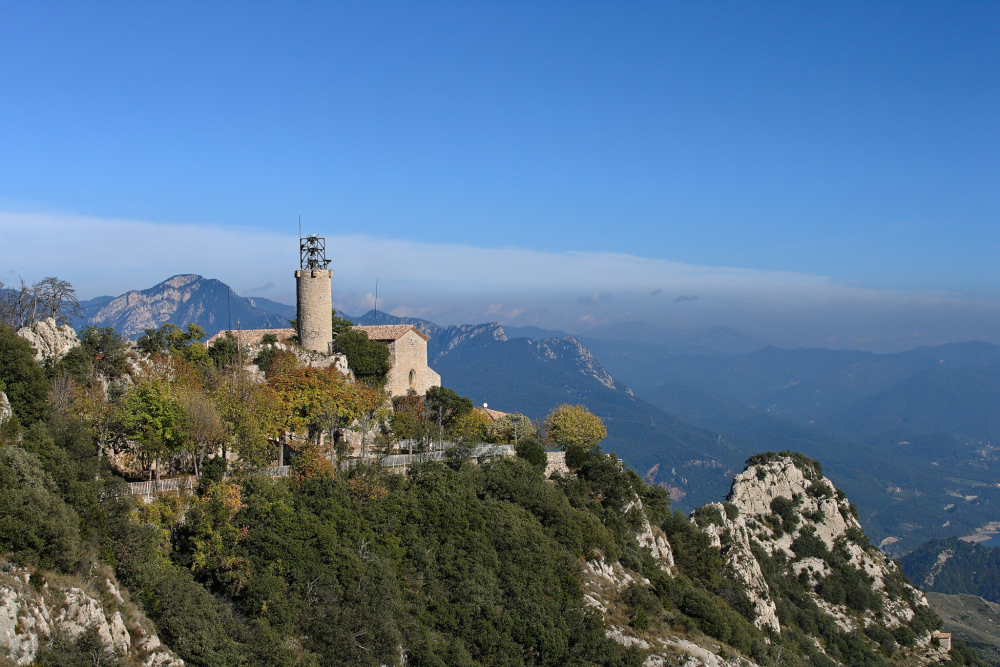
Gósol
The relevance that this town had within the Cathar heresy is shown by a document from the Inquisition in the mid-13th century, which records the testimony of a woman from here, Maria Poca, who explains that “there were few inns in Gósol that did not have [heretics] in them”. We even know the names of thirteen of them, as they were convicted and imprisoned in the Tarragona prison.
Gósol is also renowned because, in 1906, the painter Pablo Picasso lived in one of the houses in the square, at the former inn of Cal Tampanada. In some of his letters, he signed them ‘Pau de Gósol’. At that time, Gósol was a remote place and a real smugglers' haven. Picasso, who stayed there for two and a half months with his companion Fernande Olivier, left us a large body of work produced during his stay in this town and which today is spread throughout the world. His paintings and notebooks offer us images of Fernande and give us testimony of the houses, the mountains, the physiognomy of the people, the cows and the horses.
Josa de Cadí
This picturesque village, located on the sunny slopes of the Cadí, near the borders of the Alt Urgell and Berguedà regions, is known as an important centre of Cathar heresy in the 13th century, with Lord Ramon de Josa and his wife Timbors at the forefront.
It is situated on a hill crowned by the bell tower of the parish church, which was built starting in 1846 on the site of the ancient castle of the Lords of Josa, of which only scarce references remain.
We also find the old parish church of Santa Maria, in Romanesque style, perched at the foot of Cadinell, half a kilometre south of the town, in a place where even in summer it is possible to find some grazing herds.
Bagà
Bagà, a town located in the valley of the Bastareny River, has an admirable old town that is almost intact, a unique example of medieval urban planning in Catalonia It was the seat of the famous Barony of Pinós, one of the most important in the country. Although we know that its lords did not sympathise with heresy, they were able to shelter and defend their heretical subjects who had been condemned and imprisoned far from their domains by the Inquisition. Twice, in the mid-13th century, Galceran IV of Pinós appealed to the Archbishop of Tarragona to hand over 14 residents of Gósol, who were taken to the dungeons of the Baron of Pinós and ultimately freed.
Bellver de Cerdanya
It is the municipality with the largest municipal area in all of Baixa Cerdanya. Founded in the mid-13th century, this was where the royal road–following the course of the Segre River–intersected with the so-called 'via bergistana’, which came from the Coll del Pendís and was primarily a livestock route. The old town, perched on a hill, dates back to this medieval period, with its narrow streets, portals and sections of wall.
Castellbò
Prosperous medieval town dominated by the castle of the viscounts, the most powerful in Catalonia. The inhabitants of Castellbò, always loyal to their lords, were responsible for the stoning of the inquisitor Pere de Cadireta, which earned them the nickname ‘matasants’, a term first recorded by Francisco de Zamora in the late 18th century and which remains in use to this day.
Almost nothing remains of the castle, it was demolished in 1513 by order of King Ferdinand the Catholic. However, the collegiate church of Santa Maria stands at the foot of the castle hill, preserving all its monumentality.
A few kilometres east of the town, the ruins of the hospital priory of Costoja are hidden in the middle of the forest. These ancient stones are the silent witnesses to the terrible posthumous condemnation that the Inquisition issued against the viscounts Arnau and Ermessenda.
And to today’s Ariège:
Montsegur Castle
On a peak 1,200 meters high above the country of Olmes, Montsegur is undoubtedly the most emblematic site of Catharism, the true symbol of the Cathars' resistance against the Pope and the French crown. A strategic crossing point, and far enough from everywhere, the Cathar hierarchy made it the headquarters of the clandestine Church starting in 1232, with the help of Raimon de Perelha, lord of the castrum, and Pèire Rotger de Mirapeis. Finally besieged by the seneschal of Carcassonne, it had to surrender after ten months. On March 16, 1244, around 225 good Christians were burned alive, with not a single one willing to renounce the faith they professed.
Montsegur is truly the place that best exemplifies the tragedy of the Cathars. On the one hand, because of the magnificence of the place, and on the other, because the main leaders of the Church of the Cathars gathered there and died there. The Church would continue to exist in Languedoc for almost another century, and would even experience a brief period of recovery. However, in the final years of its existence in the Occitan lands, it suffered intense and relentless inquisitorial persecution that would dismantle the social fabric supporting the movement, ultimately eradicating its presence completely.
Rocafixada Castle
Situated on a strategic rocky hill overlooking the Esponne Valley, completely impregnable from three sides and only vulnerable from the northwest, this castle dates back to 1034, where Catharism was deeply rooted. From that moment until the Crusade, it was owned by the Lords of Pailhés (who were at all times on the side of the Count of Toulouse and Foix). In 1273, after the imprisonment of the Count of Foix, the castle passed into the hands of the crown.
In the 17th century, Richelieu ordered the total destruction and demolition of the castle and the town, to erase all traces of the Cathar church and their believers. It was completely destroyed by the inhabitants of the surrounding area, led by the Count of Foix. It is currently in ruins.
The Castle of Foix
Seat of the county and symbol of the accounts, it is a site with strong links to Catharism.
The present fortifications on the rock probably preceded the Castle of Foix. The Citadel is mentioned since 970, but it is from the creation of the County in 1002 that the castle takes its current appearance, with the construction of the two square towers. The round tower was built later in the 15th century.
The crusade did not attempt to assault this castle, nor did it undergo a siege. The Count of Foix handed over his fortress to the Pope as an act of submission at the Lateran Council in 1214. It was transformed into a prison in the 17th century and later, in the 19th century, it was restored to the medieval appearance it has today.
